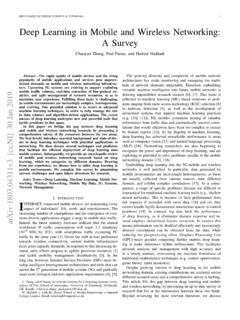Transcription of GETTING STARTED WITH DDD WHEN SURROUNDED BY …
1 GETTING STARTED WITH DDD WHEN. SURROUNDED BY LEGACY SYSTEMS. By Eric Evans 2013, domain Language, Inc. GETTING DDD STARTED SURROUNDED BY LEGACY SYSTEMS. Attempts to employ domain - driven design (DDD) tactics in the context of a legacy system almost always disappoint. In this paper, I'll describe three strategies for GETTING STARTED with DDD when you have a big commitment to legacy systems. These strategies emphasize different goals and require different levels of organizational commitment. STRATEGY 1: BUBBLE CONTEXT.
2 1. STRATEGY 2: AUTONOMOUS BUBBLE ..9. STRATEGY 3: EXPOSING LEGACY ASSETS AS SERVICES .. 13. STRATEGY 4: EXPANDING A BUBBLE .. 18. STRATEGY 1: BUBBLE CONTEXT. 1. Why we need the bubble 2. How we form the bubble 3. What becomes of the bubble WHY WE NEED THE BUBBLE. We say that effectively applying the tactical techniques of DDD requires a clean, bounded context1. This can be a daunting requirement when your work is dominated by legacy systems. These systems are often tangled, and even when they are orderly they are usually not suited to DDD.
3 One of the fundamentals of DDD is that we choose a model (by which we mean a system of abstractions, not a UML diagram or other concrete artifact) well suited to the problem at hand. Yet a legacy system already has an established model, albeit implicit, and this model can seldom be changed with a reasonable amount of effort. Even if the legacy model could be changed, the new model might not suit the legacy functionality -- the change could undermine what the legacy system was always good at. On the other hand, simply adding objects that express a distinct model without changing the ones already there will lead to conflicting rules and concepts.
4 Then again, sometimes the old model is respected, the building blocks being intended as a way to bring order and expressiveness, rather than model transformation. Although in theory this could work, in practice it seldom succeeds because most such systems have multiple, intermingled models and/or the teams have disorderly development habits. These factors disrupt subtle design elements (especially in the case of a 'Big Ball of Mud'2). This leads some organizations to introduce DDD with legacy replacement projects and other ambitious initiatives.
5 I advise against this also. Such efforts are high-risk even for a team that already has mastered whatever techniques are to be employed. As I've 1. pointed out many times, legacy replacement is usually a bad strategy, only made worse by simultaneously introducing dramatic changes in process. Introducing a difficult new set of development principles and techniques is best done incrementally, as in a pilot project, in a way that allows members of the team to gain experience and allows the organization to assess the approach.
6 The "bubble context" is a good candidate in this situation. This first strategy does not require a big commitment to DDD. It allows even a small team to achieve a modest objective involving some intricate domain logic and, ideally, one with some strategic value. Then at some point the bubble bursts. The carefully designed code is gradually reabsorbed by the legacy. It is no longer a platform for innovative new development. Yet the new functionality does not disappear. It will continue to be maintained as an extension of the legacy systems.
7 The organization now has the experience to undertake more ambitious use of DDD. Main Characteristics of the Bubble Context Strategy Modest commitment to DDD. No synchronization risk (uses legacy database). Works when there is a limited range of data needed from legacy HOW WE FORM THE BUBBLE. A 'bubble' is a small bounded context established using an Anticorruption Layer (ACL). (defined in my book3 on p xxx and in the free downloadable DDD Reference4) for the purpose of a particular development effort and not intended necessarily to be expanded or used for a long time.
8 To get STARTED , you need to choose an important, yet modest-sized, business related problem with some intricacy. You'll need a small, self-disciplined team (cherry-picked, if necessary) that has control over its code. The bubble isolates that work so the team can evolve a model that addresses the chosen area, relatively unconstrained by the concepts of the legacy systems. Anticorruption Layer and Translation The context boundary of the bubble is established with the popular ACL. 2. Great Wall of China: A different sort of ACL.
9 This boundary isolates your new work from the larger system, allowing you to have a very different model in your context than exists just on the other side of the border. For an example, imagine our organization has two existing legacy systems, each of which tracks some customers' credit cards and checking accounts. Now we want to implement a feature called 'Can I buy it?', which figures out how much the customer could theoretically lay out for an impulse buy. This would be their balance in checking plus their credit card limit minus the charges (or 'drawdowns') on their cards.
10 (Note that this feature is actually too simple to justify a bubble context in a real project. Examples have to be simple.). Desired new model Each of the legacy contexts defines some concepts which are mapped to the abstractions of our bubble context. First, a subsystem which we'll call "Context A" works according to this class diagram: 3. Existing model in Context A. These objects can be mapped to our new model: balance credit Then "Context B" works according to this class diagram: Existing model in Context B. These objects can also be mapped to our new model: Translation itself can be tricky.



